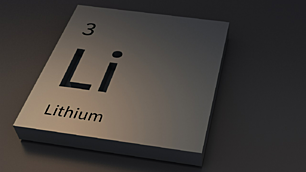Mineral Resources has fallen 26% since hitting its high in January. Here's why Airlie is still bullish
Few stocks have experienced the run of lithium, iron ore and mining services giant Mineral Resources (ASX: MIN). Since listing in 2006, its share price has soared a whopping 6,212%. If you had invested in the lows of the COVID crisis in 2020, you would have made a 423% return on your capital. Even over the past 12 months, its share price has risen more than 49%.
But recently, things haven't been so spectacular for this investor favourite. Since hitting a peak in January of $96.97, Mineral Resources' share price has cascaded 25.79%.
To make matters worse, Goldman Sachs recently downgraded the miner to a SELL, with analysts arguing that the lithium market could move into a "surplus phase" in 2024-25. They now have a $59 price target on the stock, implying a further 18% drop in Mineral Resources' share price.
To find out what all of this means for investors, I reached out to Airlie Funds Management (who once dubbed Mineral Resources "the cheapest lithium stock in the market").
In this wire, analyst Vinay Ranjan digested Mineral Resources' latest update, shares why they have still been buying on recent share price weakness, and names another stock likely to benefit from favourable supply-demand dynamics.
%20(1600%20%C3%97%20595%20px)%20(1).jpg)
LW: Mineral Resources recently released an update to the market. What were the key takeaways?
Vinay Ranjan: It was a mixed update but I'd say overall it was a net positive for shareholders. The key takeaway for investors was actually the cessation of the Ganfeng tolling agreement. That was essentially a contract with Ganfeng to convert MIN's spodumene from Mt Marion into lithium hydroxide. That contract worked really well when hydroxide prices were US$80,000 a tonne last year, but at current prices, it's actually loss-making.
We estimate MIN probably stood to lose about $100 million in the current half had that contract remained on foot. So we really congratulate management for being nimble and protecting shareholder value by ending that contract.
The release also flags some positive updates in terms of exploration in gas and lithium, but it's probably a bit too early to quantify any value from that. In terms of the negatives, there were some small downgrades to production at both Wodgina and Mt Marion for FY23 and some brokers have extrapolated that into FY24 as well. But we think of it more as a timing issue as opposed to anything structural. We expect lithium production to continue to grow in FY24 and FY25.
LW: Were there any hidden details in the report that you think the rest of the market may have missed?
Vinay Ranjan: It’s more of a general statement, but I think when you have production delays in a commodity like this, it's actually supportive of pricing. So I think a lot of brokers and a lot of research you see have lithium prices coming down at the same time as production delays are forecasted. We actually think that's supportive of prices remaining elevated for a period of time.
LW: Why is that?
Vinay Ranjan: We think it just creates a natural supply-demand imbalance. We think demand is growing structurally in the lithium industry, as electric vehicle penetration takes off around the world. So you have a structural demand story. And so any delay to supply in what is a nascent industry, we think, helps pricing. I think that tends to get lost a bit.
The only other comment I would make is probably around CapEx. I think a lot of investors look at MIN and think, 'What about the free cash flow? They're investing a lot in all these lithium and iron ore projects. When are we going to see free cash flow?' Production delays due to issues like environmental approvals also mean that the CapEx is being spread out over a longer period. We think that could actually be helpful for free cash flow near term.
LW: If MIN is facing production delays, wouldn't another producer step in to fill that demand?
Vinay Ranjan: What's been really interesting is that it's not just MIN that's having difficulty meeting production targets. We've seen companies like Wesfarmers (ASX: WES) which is experienced in chemical processing, have to delay the timing of its Mt Holland lithium project. And even Liontown (ASX: LTR) and Allkem (ASX: AKE) have had some issues as well. So we think, overall, companies are finding it difficult to mine lithium. It's a much more difficult product - it's really a chemical as opposed to a bulk commodity. So, we think that's really supportive in terms of some of these supply-demand models that we're seeing.
LW: There are very different views on the outlook for lithium from the brokers. Why is there this dispersion in your view?
Vinay Ranjan: I think trying to forecast commodity prices is fraught with a lot of danger. As you mentioned, Goldman Sachs has forecasted US$1,800 a tonne by 2024. But what gets lost in the headlines is that they also upgraded their 2H23 numbers from below US$2,500 to US$3,800 a tonne. So trying to forecast commodity pricing is really difficult.
We've built our own supply-demand model and we're optimistic that pricing can hold at current levels while supply comes online. Projects are getting delayed at the same time and we think that delayed supply is actually helping to support pricing.
We'd be happy if prices stay at current levels longer term, but naturally, we expect pricing to come down. I think trying to forecast commodity prices is not the best way to pick stocks. You need to be conservative on prices and run sensitivities.
To me, the real story with MIN is production growth. We think production growth will help offset lower prices. For example, if prices halve and production triples you are still earning the same amount.
LW: Mineral Resources has seen its share price slide approximately 26% since hitting a peak in late January. Has the team at Airlie been buying on that share price weakness?
Vinay Ranjan: We have been selectively adding to that position post the March quarterly, which was a bit of a disappointing update that touched on some of those production delays that we talked about, as well as the pricing coming off as well.
Our view on MIN hasn't changed, but I'd say that our thesis has probably been delayed.
So, some of those lithium production targets that we expected for FY24, we're now expecting in FY25. The other big story is that MIN has been deploying a lot of capital into a new iron ore project, the Onslow Iron Ore project. That project is slated to come online in FY25. Even if commodity prices fall from here, we think the earnings of this business are going to be materially higher in FY25 than today.
If you were to run current prices and have the production increases flow through in FY25, you're probably looking at a share price north of $100.
LW: What other commodities (and stocks) look promising over the year ahead?
Vinay Ranjan: Out of all the other commodities that we've looked at, we think the best supply-demand dynamic is probably in copper.
After the Oz Minerals takeover, we think BHP Group's (ASX: BHP) exposure to copper has increased significantly. It's probably the best way to gain exposure to copper now on the ASX and they continue to invest in future facing commodities.
There are some smaller pure-play names out there, but we think investors should be pretty careful about moving down the quality spectrum in copper. We've seen companies like 29Metals (ASX: 29M), for example, have a tough year. It's down more than 50% year-to-date. It just shows that quality really matters and you need to be careful about investing in companies that are perhaps a bit higher on the cost curve or are concentrated in only one or two assets, so if there is a disruption like they've had in Queensland, that can really hurt your earnings.
More like this

2 topics
8 stocks mentioned
1 contributor mentioned

